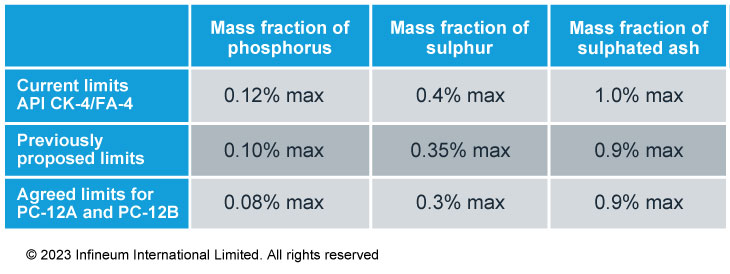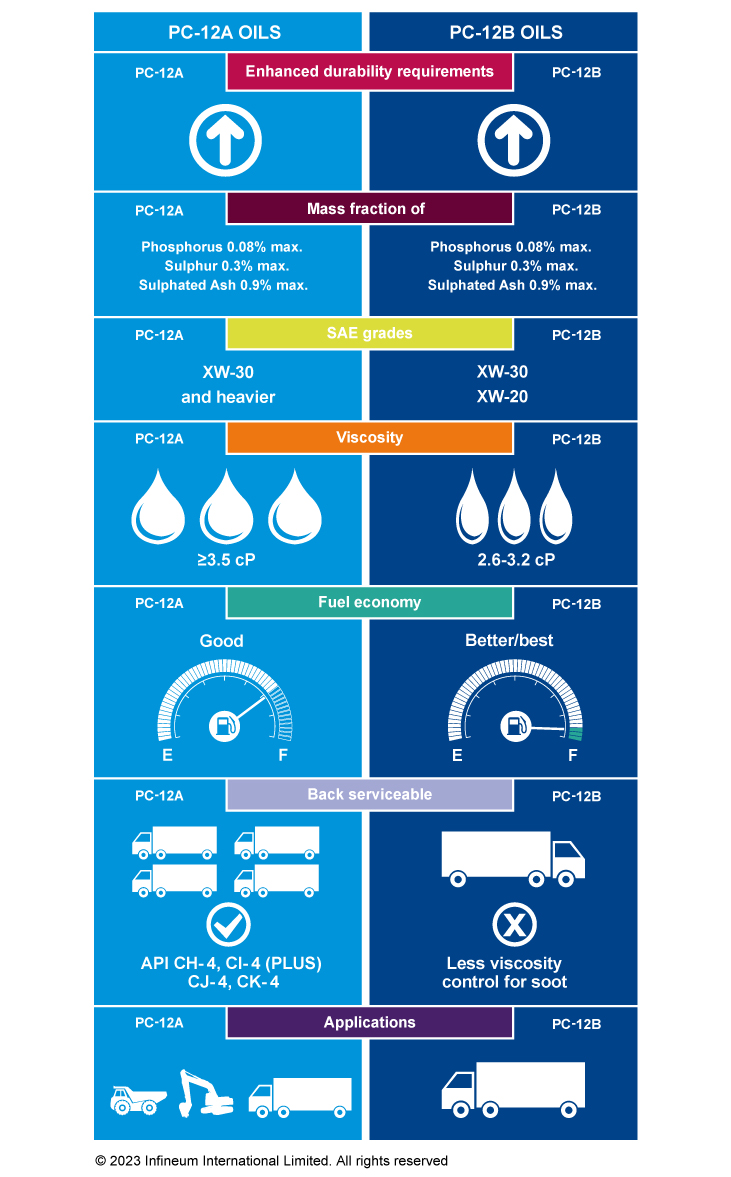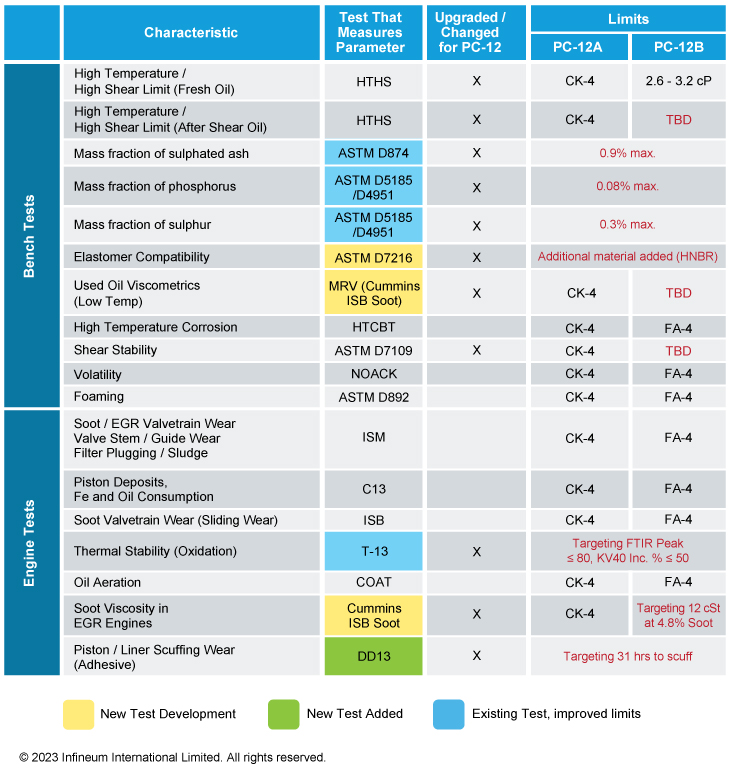Commercial vehicles
What’s driving Daimler Truck?
16 April 2024
12 December 2023
Industry moves ahead on new engine oil standards for heavy-duty vehicles

Progress continues on the development of the new PC-12 heavy-duty engine oil category. Following decisions taken at industry meetings, David Brass, Infineum Lead Industry Liaison Advisor, gives an update on the latest developments and the challenges he sees ahead.
The large emissions reduction needs coming from new emissions regulations in North America for Model Year 2027 on-road vehicles are driving change to engine and aftertreatment system hardware. The new PC-12 engine oil performance category is being developed to ensure lubricants continue to deliver sufficient protection to this evolving hardware. There is much work to be completed to keep the new category on track for the desired First License date of January 1 2027. However, as David reports, significant decisions have recently been taken that are helping to shape the category.
One of the key changes now agreed is the tightening of the limits for phosphorus, sulphur and sulphated ash in both the PC-12A and PC-12B categories, which can be seen in the table below.

These limits are designed to support on-road OEMs as they work to meet the new emissions standards. However, some OEMs, particularly those producing off-road vehicles, which are not affected by the new emissions standards, have some concerns around durability with the lower chemical limits. These OEMs have suggested that they plan to remain on API CK-4 oils at the higher chemical limits. In addition, they would like to gain some of the advantages of PC-12 and have requested continued usage of enhanced API CK-4 oils (≥ 0.10% mass phosphorus) with performance meeting the new Volvo T-13 limits targets and having the DD13 performance to remain available in the marketplace.
Another key change is the withdrawal of the phosphorus retention parameter, requested owing to concerns about durability protection and the potential for aftertreatment poisoning. However, testing work carried out by American Chemistry Council (ACC) to compare phosphorus retention to wear parameters across multiple PC-12 tests showed no correlation.
The request for the protection for hydrogenated nitrile seals has been handled, with the addition of a brand new hydrogenated nitrile butadiene rubber (HNBR) material. Testing is expected to start in Q1 2024.
As expected, PC-12 is split into two categories that align with the viscosity divide that exists today with API CK-4 and FA-4, as shown below.

A number of changes to the tests for PC-12 are being made and a summary of what can currently be expected is shown in the table below. While we have included the target values (shown in red) for information, the actual pass/fail limits will not be set until after the technical demonstration period.

The new Detroit Diesel DD13 Scuffing Test, has been included to address concerns around scuffing in the power cylinder with lower viscosity fluids. This test, which already holds an ASTM method (ASTM D8074), will be introduced into the category with its current low viscosity reference oil.
The development of the Cummins ISB soot viscosity test that will be used for PC-12 at the moment is looking good. As of December 7, all of the laboratories looking to participate in the precision matrix have shown that they are capable of running the test. Testing of the new reference oil for the PC-12B category has not been completed, which is the last item needing completion before the precision matrix can start. The vote on precision matrix readiness is expected to take place on January 4, and the precision matrix could start shortly afterwards.
Currently industry is working on base oil interchange and viscosity grade read across (BOI/VGRA) matrix designs for both of these new tests. These will look at VGRA and BOI between Group II/Group II base stocks and Group II/Group III base stocks.
A new SAE 10W-30 FA-4 viscosity reference oil has been decided on for the Cummins ISB test. This is targeted to replace the current SAE 15W-40 reference oil that is used for the Cummins ISB. In addition a reference oil for the Volvo T-13 test, meeting the new target performance for PC-12, has also been selected. Testing is expected to start in 1Q 2024 once the reference oil supply has been made available.
A new reference oil will also be added for the Cummins ISM, although at present this oil has not been agreed on and it is hoped that testing will start in 1Q 2024
With most of the timeline crunch items now removed, we are currently on track to meet the proposed First License date of January 1 2027. The biggest items still being worked on are:
The only item that is still unresolved is the extent of any further BOI/VGRA testing in 2024. This is likely to be agreed once we can confirm the level of funds remaining following the two matrices that are currently being designed.
There is still much work to be done to develop and test engine oils to get them ready for market in MY 2027 vehicles. Infineum Insight will keep you informed of PC-12 progress. Sign up here to receive regular updates to your inbox and visit our PC-12 resource hub for more information.
Sign up to receive monthly updates via email